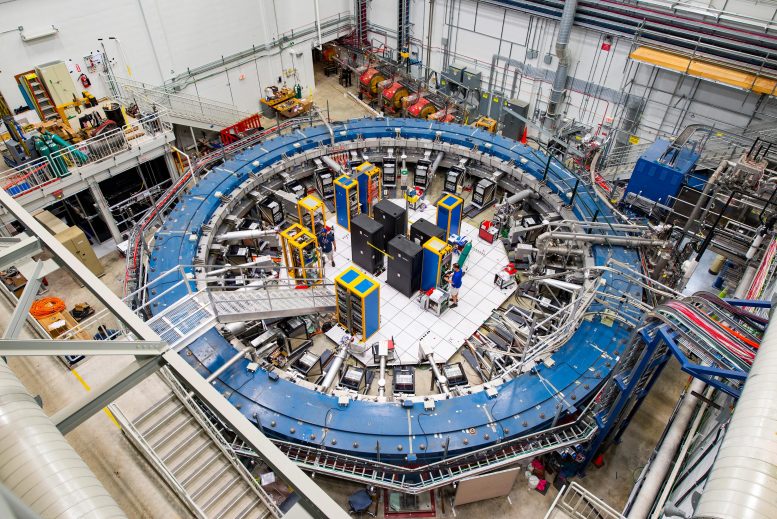The news that muons have a little extra wiggle in their step sent word buzzing around the world this spring.
The Muon g-2 experiment hosted at Fermi National Accelerator Laboratory announced on April 7 that they had measured a particle called a muon behaving slightly differently than predicted in their giant accelerator. It was the first unexpected news in particle physics in years.
Everyone’s excited, but few more so than the scientists whose job it is to spitball theories about how the universe is put together. For these theorists, the announcement has them dusting off old theories and speculating on new ones.
“To a lot of us, it looks like and smells like new physics,” said Prof. Dan Hooper. “It may be that one day we look back at this and this result is seen as a herald.”
Gordan Krnjaic, a fellow theoretical physicist, agreed: “It’s a great time to be a speculator.”
The two scientists are affiliated with the University of Chicago and Fermilab; neither worked directly on the Muon g-2 experiment, but both were elated by the results. To them, these findings could be a clue that points the way to unraveling the last mysteries of particle physics—and with it, our understanding of the universe as a whole.
The Muon g-2 experiment hosted at Fermi National Accelerator Laboratory announced on April 7 that they had measured a particle called a muon behaving slightly differently than predicted in their giant accelerator. It was the first unexpected news in particle physics in years.
Everyone’s excited, but few more so than the scientists whose job it is to spitball theories about how the universe is put together. For these theorists, the announcement has them dusting off old theories and speculating on new ones.
“To a lot of us, it looks like and smells like new physics,” said Prof. Dan Hooper. “It may be that one day we look back at this and this result is seen as a herald.”
Gordan Krnjaic, a fellow theoretical physicist, agreed: “It’s a great time to be a speculator.”
The two scientists are affiliated with the University of Chicago and Fermilab; neither worked directly on the Muon g-2 experiment, but both were elated by the results. To them, these findings could be a clue that points the way to unraveling the last mysteries of particle physics—and with it, our understanding of the universe as a whole.

The Muon g-2 ring sits in its detector hall amidst electronics racks, the muon beamline, and other equipment. This impressive experiment operates at negative 450 degrees Fahrenheit and studies the precession, or “wobble,” of particles called muons as they travel through the magnetic field. Credit: Reidar Hahn/Fermilab Setting the Standard
Based on century-old experiments and theories going back to the days of Albert Einstein’s early research, scientists have sketched out a theory of how the universe—from its smallest particles to its largest forces—is put together. This explanation, called the Standard Model, does a pretty good job of connecting the dots. But there are a few holes—things we’ve seen in the universe that aren’t accounted for in the model, like dark matter.
No problem, scientists thought. They built bigger experiments, like the Large Hadron Collider in Europe, to investigate the most fundamental properties of particles, sure that this would yield clues. But even as they looked more deeply, nothing they found seemed out of step with the Standard Model. Without new avenues to investigate, scientists had no idea where and how to look for explanations for the discrepancies like dark matter.
Then, finally, the Muon g-2 experiment results came in from Fermilab (which is affiliated with the University of Chicago). The experiment reported a tiny difference between how muons should behave according to the Standard Model, and what they were actually doing inside the giant accelerator. TO READ ENTIRE ARTICLE, CLICK HERE...

No comments:
Post a Comment